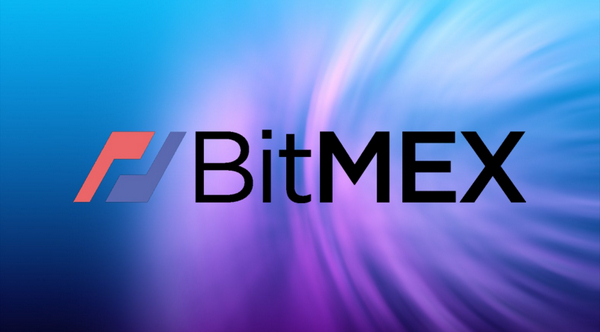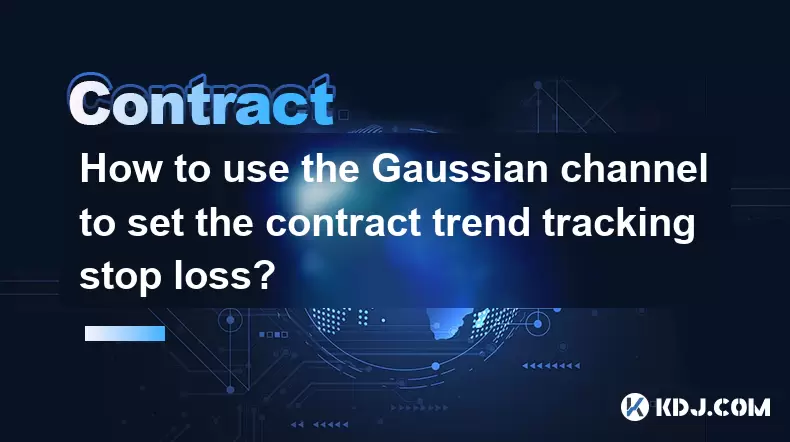-
 Bitcoin
Bitcoin $106,731.2224
-1.05% -
 Ethereum
Ethereum $2,444.9804
-1.20% -
 Tether USDt
Tether USDt $1.0003
0.01% -
 XRP
XRP $2.1882
0.09% -
 BNB
BNB $651.1435
-0.61% -
 Solana
Solana $148.3252
-2.09% -
 USDC
USDC $1.0000
0.01% -
 TRON
TRON $0.2787
0.55% -
 Dogecoin
Dogecoin $0.1598
-3.16% -
 Cardano
Cardano $0.5520
-2.43% -
 Hyperliquid
Hyperliquid $39.0960
-2.64% -
 Bitcoin Cash
Bitcoin Cash $516.9519
2.98% -
 Sui
Sui $2.7011
-2.95% -
 Chainlink
Chainlink $13.0582
-1.71% -
 UNUS SED LEO
UNUS SED LEO $8.9250
-2.53% -
 Stellar
Stellar $0.2359
-0.18% -
 Avalanche
Avalanche $17.3856
-3.73% -
 Toncoin
Toncoin $2.8095
-3.56% -
 Shiba Inu
Shiba Inu $0.0...01121
-1.95% -
 Litecoin
Litecoin $85.2795
-0.85% -
 Hedera
Hedera $0.1471
-2.15% -
 Monero
Monero $319.8004
1.12% -
 Dai
Dai $1.0001
0.01% -
 Ethena USDe
Ethena USDe $1.0001
0.02% -
 Bitget Token
Bitget Token $4.5344
-1.07% -
 Polkadot
Polkadot $3.3224
-2.96% -
 Uniswap
Uniswap $6.9697
-2.75% -
 Aave
Aave $266.1658
-2.25% -
 Pepe
Pepe $0.0...09414
-3.41% -
 Pi
Pi $0.4913
-3.29%
The difference between BitMEX options and contracts
Options on BitMEX offer limited risk and flexibility in trade execution, while contracts provide continuous trading, leverage, and exposure to unlimited reward potential.
Nov 20, 2024 at 08:36 am

The Difference Between BitMEX Options and Contracts
Introduction:
BitMEX, a leading cryptocurrency derivatives exchange, offers a wide range of trading products tailored to traders of varying levels and preferences. Among these are options and contracts, two distinct financial instruments that differ in their underlying mechanisms, risk-reward profiles, and trading strategies. Understanding the nuances between these products is crucial for traders seeking to optimize their trading outcomes.
Step 1: Understanding Options on BitMEX
Options, on BitMEX, represent contracts that grant the buyer the right, but not the obligation, to buy or sell an underlying asset at a predetermined price (strike price) on or before a specific date (expiration date). Traders can purchase two main types of options on BitMEX:
- Call Options: Grant the buyer the right to buy the underlying asset at the strike price on or before the expiration date.
- Put Options: Grant the buyer the right to sell the underlying asset at the strike price on or before the expiration date.
Key Features:
- Limited Risk: Option buyers risk only the option premium paid, which is significantly lower than the cost of the underlying asset.
- Flexibility: Options provide traders with flexibility in determining the strike price and expiration date that suit their trading objectives.
- Leverage Potential: Options can provide leverage by allowing traders to control a larger position size with a smaller capital investment.
Step 2: Understanding Contracts on BitMEX
Contracts, on BitMEX, refer to perpetual swaps, which are futures-like contracts that lack an expiration date. Perpetual swaps simulate the exposure to the underlying asset without the need for physical delivery. Traders can hold positions in perpetual swaps indefinitely, leveraging the price fluctuations of the underlying asset.
Key Features:
- Continuous Trading: Traders can hold positions in perpetual swaps indefinitely, allowing for uninterrupted exposure to market movements.
- Reduced Counterparty Risk: Unlike traditional futures contracts, perpetual swaps on BitMEX are settled bilaterally between traders, eliminating the risk of centralized exchange insolvency.
- Margin Trading: Traders can leverage their positions using margin, multiplying their potential returns while also amplifying their risks.
Step 3: Comparing Options and Contracts on BitMEX
Risk-Reward Profile:
- Options: Limited risk, only the premium paid. Reward capped at the potential profit earned if the option becomes profitable.
- Contracts: Unlimited risk, as losses can exceed the margin deposited. Reward potential is unlimited, as profits can grow indefinitely.
Trading Strategies:
- Options: Suitable for strategies involving speculative bets on future price movements or hedging existing positions.
- Contracts: More versatile, can be used for long-term position trading, hedging, or speculative day trading.
Capital Requirements:
- Options: Lower capital requirements, as traders only need to pay the option premium.
- Contracts: Higher capital requirements, as traders need to maintain sufficient margin to cover potential losses.
Step 4: Choosing the Right Instrument for Your Trading Needs
The choice between options and contracts on BitMEX depends on the trader's risk tolerance, trading style, and specific goals:
- Option buyers: Seek limited risk exposure and flexibility in trade execution.
- Option sellers: Aim to generate income from option premiums or hedge against existing positions.
- Contract traders: Prefer continuous trading, leverage, and exposure to unlimited reward potential.
Step 5: Additional Considerations
In addition to the fundamental differences, traders should also consider the following when choosing between options and contracts on BitMEX:
- Fees: BitMEX charges distinct fees for options and contracts trading.
- Market Liquidity: Options markets may have lower liquidity than contract markets, especially for non-standard options.
- Volatility Impact: Increased market volatility can significantly impact option premiums and contract values.
Disclaimer:info@kdj.com
The information provided is not trading advice. kdj.com does not assume any responsibility for any investments made based on the information provided in this article. Cryptocurrencies are highly volatile and it is highly recommended that you invest with caution after thorough research!
If you believe that the content used on this website infringes your copyright, please contact us immediately (info@kdj.com) and we will delete it promptly.
- Meme Coins Mania: Arctic Pablo Leads the New Crypto Pack
- 2025-07-02 06:30:11
- Meme Coins on the Move: Arctic Pablo, Bone ShibaSwap, and the Quest for the Next Big Thing
- 2025-07-02 06:30:11
- Crypto ETFs: Navigating the US Market Path and SEC Considerations
- 2025-07-02 06:50:12
- Pepeto: The Frog-Themed Meme Coin Set to Outperform in Q3 2025?
- 2025-07-02 05:10:12
- SYRUP Price Swings: Navigating the Opportunity
- 2025-07-02 06:35:12
- Altcoins, Collaboration, and Trump: A Wild Ride in Crypto
- 2025-07-02 05:10:12
Related knowledge

How to use the price slope to filter the false breakthrough signal of the contract?
Jun 20,2025 at 06:56pm
Understanding the Concept of Price Slope in Contract TradingIn contract trading, especially within cryptocurrency derivatives markets, price slope refers to the rate at which the price changes over a specific time period. It helps traders assess the strength and sustainability of a trend. A steep slope may indicate strong momentum, while a shallow slope...

How to determine the expected volatility of the contract through the volatility cone?
Jun 19,2025 at 12:28pm
Understanding the Basics of Volatility in Cryptocurrency ContractsIn the realm of cryptocurrency trading, volatility is a key metric that traders use to assess potential risk and reward. When dealing with futures contracts, understanding how volatile an asset might become over time is crucial for position sizing, risk management, and strategy developmen...

How to formulate a contract intraday trading plan in combination with the pivot point system?
Jun 21,2025 at 03:42pm
Understanding the Basics of Pivot Points in Cryptocurrency TradingPivot points are technical analysis tools used by traders to identify potential support and resistance levels. These levels are calculated using the previous day's high, low, and closing prices. In the context of cryptocurrency trading, where markets operate 24/7, pivot points help trader...

How to adjust the contract position ratio through the price fluctuation entropy?
Jun 22,2025 at 11:42am
Understanding Price Fluctuation Entropy in Cryptocurrency ContractsIn the world of cryptocurrency futures trading, price fluctuation entropy is a relatively new concept used to measure market volatility and uncertainty. It derives from information theory, where entropy refers to the degree of randomness or unpredictability in a system. In crypto contrac...

How to use the volume swing indicator to predict the contract volume-price divergence?
Jun 18,2025 at 11:42pm
Understanding the Volume Swing IndicatorThe volume swing indicator is a technical analysis tool used primarily in cryptocurrency trading to evaluate changes in volume over time. Unlike price-based indicators, this metric focuses solely on trading volume, which can provide early signals about potential market reversals or continuations. The key idea behi...

How to use the Gaussian channel to set the contract trend tracking stop loss?
Jun 18,2025 at 09:21pm
Understanding the Gaussian Channel in Cryptocurrency TradingThe Gaussian channel is a technical indicator used primarily in financial markets, including cryptocurrency trading, to identify trends and potential reversal points. It is based on statistical principles derived from the normal distribution, commonly known as the Gaussian distribution or bell ...

How to use the price slope to filter the false breakthrough signal of the contract?
Jun 20,2025 at 06:56pm
Understanding the Concept of Price Slope in Contract TradingIn contract trading, especially within cryptocurrency derivatives markets, price slope refers to the rate at which the price changes over a specific time period. It helps traders assess the strength and sustainability of a trend. A steep slope may indicate strong momentum, while a shallow slope...

How to determine the expected volatility of the contract through the volatility cone?
Jun 19,2025 at 12:28pm
Understanding the Basics of Volatility in Cryptocurrency ContractsIn the realm of cryptocurrency trading, volatility is a key metric that traders use to assess potential risk and reward. When dealing with futures contracts, understanding how volatile an asset might become over time is crucial for position sizing, risk management, and strategy developmen...

How to formulate a contract intraday trading plan in combination with the pivot point system?
Jun 21,2025 at 03:42pm
Understanding the Basics of Pivot Points in Cryptocurrency TradingPivot points are technical analysis tools used by traders to identify potential support and resistance levels. These levels are calculated using the previous day's high, low, and closing prices. In the context of cryptocurrency trading, where markets operate 24/7, pivot points help trader...

How to adjust the contract position ratio through the price fluctuation entropy?
Jun 22,2025 at 11:42am
Understanding Price Fluctuation Entropy in Cryptocurrency ContractsIn the world of cryptocurrency futures trading, price fluctuation entropy is a relatively new concept used to measure market volatility and uncertainty. It derives from information theory, where entropy refers to the degree of randomness or unpredictability in a system. In crypto contrac...

How to use the volume swing indicator to predict the contract volume-price divergence?
Jun 18,2025 at 11:42pm
Understanding the Volume Swing IndicatorThe volume swing indicator is a technical analysis tool used primarily in cryptocurrency trading to evaluate changes in volume over time. Unlike price-based indicators, this metric focuses solely on trading volume, which can provide early signals about potential market reversals or continuations. The key idea behi...

How to use the Gaussian channel to set the contract trend tracking stop loss?
Jun 18,2025 at 09:21pm
Understanding the Gaussian Channel in Cryptocurrency TradingThe Gaussian channel is a technical indicator used primarily in financial markets, including cryptocurrency trading, to identify trends and potential reversal points. It is based on statistical principles derived from the normal distribution, commonly known as the Gaussian distribution or bell ...
See all articles

























































































